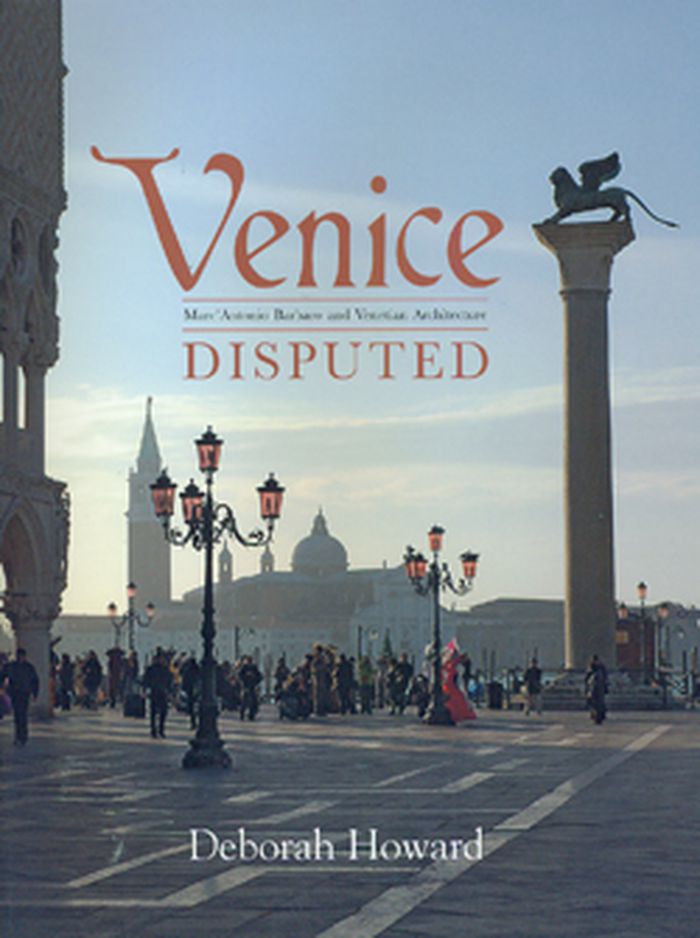$63.95
(disponible sur commande)
Résumé:
This guidebook to the history of architecture in Venice encompasses the city’s variety of buildings from ancient times to the present day. Completely updated, this edition of Deborah Howard’s classic volume, first published in 1980, is filled with new illustrations. Howard traces the entire evolution of Venice’s architecture, placing special emphasis on the political,(...)
The architectural history of Venice
Actions:
Prix:
$63.95
(disponible sur commande)
Résumé:
This guidebook to the history of architecture in Venice encompasses the city’s variety of buildings from ancient times to the present day. Completely updated, this edition of Deborah Howard’s classic volume, first published in 1980, is filled with new illustrations. Howard traces the entire evolution of Venice’s architecture, placing special emphasis on the political, social, and economic framework that supported it. She highlights the achievements of such individual architects as Sansovino, Palladio, Longhena, Massari, and Selva.
Histoire jusqu’à 1900
$75.00
(disponible sur commande)
Résumé:
In the councils and magistracies of the Venetian Republic, politicians argued intently over civic building projects in a manner curiously reminiscent of a modern democracy, taking advice from architects, engineers, and the public. Written by a leading authority on Venetian architecture, the book explores the complex dialectic between theory and practice; utopia and(...)
Venice disputed: Marc Antonio Barbaro and venetian architecture
Actions:
Prix:
$75.00
(disponible sur commande)
Résumé:
In the councils and magistracies of the Venetian Republic, politicians argued intently over civic building projects in a manner curiously reminiscent of a modern democracy, taking advice from architects, engineers, and the public. Written by a leading authority on Venetian architecture, the book explores the complex dialectic between theory and practice; utopia and reality; and design and technology that infused these disputes. The bitterly contested debates are seen through the experiences of one particular Venetian nobleman, Marc'Antonio Barbaro (1518-1595). Recognized as a gifted stuccoist and draftsman, Barbaro played a prominent role in the discussions about major state building projects such as Palladio's church of the Redentore, the restoration of the Doge's Palace, and the erection of the Rialto Bridge. He was a distinguished statesman and orator, but his idealistic views about the rhetorical power of classicism frequently clashed with local technological expertise. Venice Disputed recounts not only his public role but also his private life, centered on the now-famous family villa that he and his brother commissioned. Barbaro's compelling story thus weaves together politics, architectural history, and private life in early modern Venice.
Architecture, monographies
livres
Venice and the East
$96.00
(disponible sur commande)
Résumé:
This lively and richly illustrated book investigates the influence of oriental trade and travel on medieval Venice and its architecture. Architectural historian Deborah Howard examines the experiences of Venetian merchants overseas, focusing on links (...)
octobre 2000, New Haven
Venice and the East
Actions:
Prix:
$96.00
(disponible sur commande)
Résumé:
This lively and richly illustrated book investigates the influence of oriental trade and travel on medieval Venice and its architecture. Architectural historian Deborah Howard examines the experiences of Venetian merchants overseas, focusing on links with Egypt, Syria, and Palestine, as well as with Persia and the Silk Route. She argues that many Venetians gained insight into Islamic culture through personal contacts with their Muslim trading partners. Based on wide-ranging multidisciplinary research, this book examines the mechanisms that governed the exchange of visual culture across ideological boundaries before the age of printing. Howard explores a range of building types that reflect the impact of Islamic imagery, paying special attention to two icon buildings, San Marco and the Palazzo Ducale. She considers the complexities of importing Muslim ideas to an unambiguously Christian city, itself the point of embarkation for pilgrims to the Holy Land.
livres
octobre 2000, New Haven
$57.50
(disponible sur commande)
Résumé:
The career of the architect Andrea Palladio (1508-1580) is underpinned by a dramatic increase in prosperity on the Venetian "terraferma" in both town and country, a boom due in large measure to a little-studied revolution in manufacturing. This book brings to light for the first time the architecture of these early industries, especially the production of textiles, mining(...)
The proto-industrial architecture of the Veneto in the age of Palladio
Actions:
Prix:
$57.50
(disponible sur commande)
Résumé:
The career of the architect Andrea Palladio (1508-1580) is underpinned by a dramatic increase in prosperity on the Venetian "terraferma" in both town and country, a boom due in large measure to a little-studied revolution in manufacturing. This book brings to light for the first time the architecture of these early industries, especially the production of textiles, mining and metalworking, paper manufacture, ceramics, sawmilling and leather-tanning. The huge surge in patent applications to the Venetian Senate in the period highlights the parallel technological improvements in both efficiency and quality. Former proto-industrial buildings across the Veneto, studied at first-hand, reveal the efficiency of hydraulic power and smooth-running mechanical processes. Water-power, a clean, renewable energy source, and structures made of natural, traditional materials, have much to teach today’s civilization.
Théorie de l’architecture


